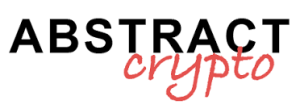Australian stablecoin regulation: the ASIC introduces a class relief that simplifies the distribution of tokens issued by AFS licensed entities, reducing bureaucratic burdens and increasing transparency for intermediaries.
The ASIC (Australian Securities and Investments Commission) has implemented a class relief, as indicated in the official release from ASIC, in parallel with the work of the Treasury on the stablecoin regime. According to data collected during the monitoring of responses to CP 381 and in interviews with market operators conducted for this article, many intermediaries report that the exemption could reduce time and costs of market entry. Industry analysts also note an increase in requests for regulatory clarification from exchanges and payment service providers in recent weeks.
The class relief allows intermediaries to distribute stablecoins issued by operators holding an AFS (Australian Financial Services) license without needing to obtain additional licenses, such as market or clearing licenses. The measure, which will become operational after registration in federal regulations and the possible formalization of technical details, is seen as a pragmatic step to resolve the regulatory uncertainty that has long hindered the stablecoin market.
In brief
- Operational Exemption: distributors will not need to request additional financial licenses for tokens issued by entities already authorized by AFS.
- Greater transparency: there is a requirement to make product disclosure statements (PDS) accessible to end users.
- Bridge measure: the regime, of a temporary nature, has been designed pending the final framework on payment stablecoins, currently being defined by the Treasury.
What changes: measure, scope, and limits
The ASIC introduces a class exemption that exempts intermediaries from the obligation to obtain separate financial licenses when distributing tokens issued by entities already holding an AFS license. Essentially, it removes an additional layer of bureaucracy where the issuer is already supervised. This exemption will come into effect once officially registered in federal legislation and published in the official ASIC registers.
It should be noted that the measure does not alter the legal status of stablecoins, nor does it redefine whether a token falls under “financial products”: the qualification remains unchanged. Issuers remain primarily responsible for disclosure and prudence requirements, including the publication and updating of Product Disclosure Statements (PDS).
Impact on intermediaries and market
For intermediaries, the main effect is a simplification of bureaucratic burdens and authorization complexity; for end customers, greater informational transparency. In particular:
- Intermediaries must make the Product Disclosure Statements (PDS) provided by issuers accessible, thus ensuring the transparency of the offering.
- It is required to check the validity of the AFS license and the prudential measures adopted by the issuer.
- The regulations require traceability through the maintenance of records and the information provided to clients.
- Alignment with the existing conduct rules for the distribution of regulated products is required.
Concrete examples
- A local exchange will be able to list and distribute a stablecoin in Australian dollars, issued by an entity holding the AFS license, without needing to acquire an additional market license.
- A payment provider can integrate the stablecoin for merchants, provided they publish the issuer’s PDS and comply with customer information obligations.
Why it is a “transitional” exemption
The measure is conceived as a bridge towards the definitive regime on payment stablecoins that the Treasury is defining. Steve Vallas, CEO of Blockchain APAC, described the provision as “pragmatic” and useful in reducing regulatory frictions while awaiting broader reforms. As specified by Decrypt, although it does not change the classification of some stablecoins as financial products, the exemption suspends the burdens related to secondary licenses for distributors, leaving the responsibilities of the issuers unchanged.
Timeline and Next Steps
- ASIC has initiated the consultation on CP 381 and has set the deadline for comments at 5:00 PM on February 28, 2025; updates to INFO 225 (ASIC’s Information Sheet 225) are expected in the following weeks.
- The regulatory framework for payment stablecoins is under discussion and will be aligned with the federal regulatory measure.
- ASIC has indicated the possibility of extending the exemption to new issuers who obtain the AFS license.
Context and Critical Reading
The regulatory relief measure shifts the focus to oversight of issuers, reducing the bottlenecks in the distribution of stablecoins. The approach, which places the issuer at the center of controls, ensures that distributors operate within the compliance framework dictated by the authorized operator. However, trust in collateral and auditing practices remains crucial: without solid safeguards, the risk of regulatory arbitrage and operational concentration persists.
An industry insider commented to Decrypt that this exemption “helps bridge regulatory friction while Treasury finalizes its proposed stablecoin regime,” highlighting how the success of the initiative will be driven by market demand, which will determine the traction of an Australian dollar stablecoin.
What to do now: checklist for intermediaries
- Verify that the stablecoin issuer holds and maintains a valid AFS license.
- Regularly publish and update the PDS in an area accessible to clients.
- Strengthen KYC/AML flows and specific risk disclosures for stablecoins.
- Establish clear distribution agreements that define responsibilities, escalation, and reporting.
- Constantly monitor updates from INFO 225 and regulatory developments from the Treasury to promptly adjust internal processes.
In summary
The class waiver introduced by ASIC is a pragmatic step towards a more orderly and transparent distribution of stablecoins, easing the burdens for distributors while keeping responsibilities with the issuers. This measure, of a transitional nature, lays the groundwork for the definitive regulatory framework on payment stablecoins, which can evolve and expand as soon as the regulation is formalized.


